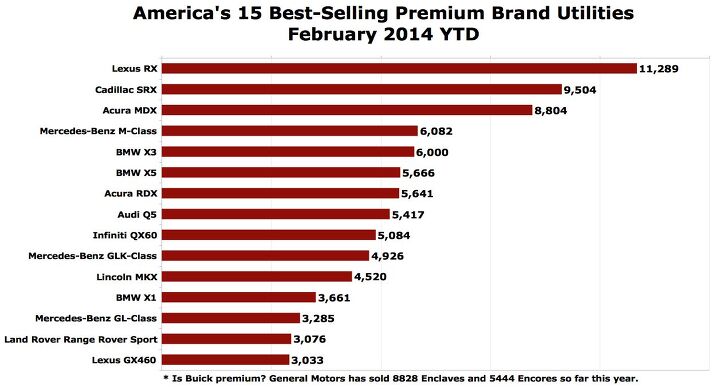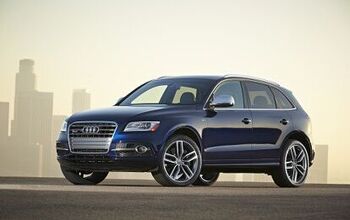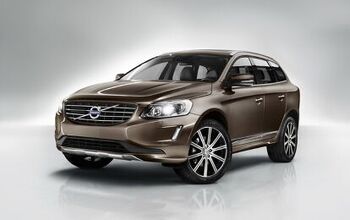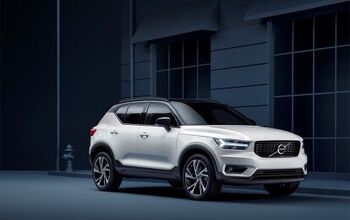Cain's Segments: Luxury Crossovers
A strong start to 2014 has the BMW X3 leading its segment even as it’s challenged more closely in BMW showrooms by the slightly smaller and less expensive X1.
X1 sales in February jumped 57% to 2329 units, only 318 units shy of what BMW USA managed in January and February of 2013 combined. More direct competition for the X1 is set to arrive soon in the form of the Mercedes-Benz GLA and Audi Q3.
At this time, however, potential X1 buyers look across the BMW showroom floor and wonder why they wouldn’t pay a bit more for the X3. Over the last two months, 62% of the X1/X3 juggernaut’s sales have been X3-derived, up just a hair from last year’s 61%.
The X3 outsold Acura’s much less costly RDX by 390 units in February. The RDX is wildly popular, but like the X3, it’s not among the quartet of top-selling premium utility vehicle nameplates in America.
That group begins with the Lexus RX, a viable alternative to these entry-level crossovers, particularly as Lexus doesn’t yet offer a production version of the LF-NX Concept. Likewise, the Cadillac SRX would be seen by many to be Detroit’s rival for the X3, RDX, Q5, and GLK, at least until Lincoln’s MKC arrives. The third-ranked premium SUV/CUV nameplate in America is the Acura MDX; it’s followed by the Mercedes-Benz M-Class.
Although they don’t lead the way for premium automakers, for many buyers these entry points to the brands’ crossover lineups form the entry point to the brand, full stop. Forget the CLA, A3, and 2-Series; passenger cars with trunks that they are. Growth from these luxury crossovers is significant, especially when one considers that America’s new vehicle market hasn’t grown at all in 2014. The RDX, Q5, X1, X3, QX50, LR2, and GLK have all sold more often over the last two months than during the first two months of 2013.
The Audi Q5’s slight February decline was the first such decrease for the Q5 since October 2012. Q5 volume has improved each year since the model arrived in 2009. Land Rover’s Range Rover Evoque is certainly small enough to be displayed here, although its base price might place it out of reach for a typical Acura RDX customer. Evoque sales are down 5% this year; February volume slid by 54 units. (The Range Rover Sport generated two-thirds of Land Rover’s U.S. February volume.)
Volvo’s XC60 is, not unlike the Volvo brand which it helps to lead, struggling in the United States. Like the Q5, XC60 sales have improved each year since it arrived in 2009, but 2014’s inauspicious start is not terribly surprising given the brand’s recent struggles to attract large numbers of American buyers.
Nevertheless, the story of small luxury crossovers is not told with an emphasis on irregular year-over-year decreases. The RDX, X1, X3, QX50, LR2, and GLK jointly rose 26% in February 2014. Those were not at all the sorts of figures commonly achieved by automakers last month.
AutoFeb.2014Feb.2013%Change2 mos.20142 mos.2013%ChangeAcura RDX29112795+ 4.2%56415284+ 6.8%Audi Q526432753– 4.0%54175097+ 6.3%BMW X123291482+ 57.2%36612647+ 38.3%BMW X333012175+ 51.8%60004180+ 43.5%Infiniti QX50/EX220150+ 46.7%417318+ 31.1%Land Rover LR2358273+ 31.1%721573+ 25.8%Land Rover Range Rover Evoque927981– 5.5%18061910– 5.4%Mercedes-Benz GLK-Class26242420+ 8.4%49264816+ 2.3%Volvo XC6011461496– 23.4%20883062– 31.8%—— —————Total 16,459 14,525+ 13.3% 30,677 27,887+ 10.0%More by Timothy Cain
Latest Car Reviews
Read moreLatest Product Reviews
Read moreRecent Comments
- Theflyersfan The wheel and tire combo is tragic and the "M Stripe" has to go, but overall, this one is a keeper. Provided the mileage isn't 300,000 and the service records don't read like a horror novel, this could be one of the last (almost) unmodified E34s out there that isn't rotting in a barn. I can see this ad being taken down quickly due to someone taking the chance. Recently had some good finds here. Which means Monday, we'll see a 1999 Honda Civic with falling off body mods from Pep Boys, a rusted fart can, Honda Rot with bad paint, 400,000 miles, and a biohazard interior, all for the unrealistic price of $10,000.
- Theflyersfan Expect a press report about an expansion of VW's Mexican plant any day now. I'm all for worker's rights to get the best (and fair) wages and benefits possible, but didn't VW, and for that matter many of the Asian and European carmaker plants in the south, already have as good of, if not better wages already? This can drive a wedge in those plants and this might be a case of be careful what you wish for.
- Jkross22 When I think about products that I buy that are of the highest quality or are of great value, I have no idea if they are made as a whole or in parts by unionized employees. As a customer, that's really all I care about. When I think about services I receive from unionized and non-unionized employees, it varies from C- to F levels of service. Will unionizing make the cars better or worse?
- Namesakeone I think it's the age old conundrum: Every company (or industry) wants every other one to pay its workers well; well-paid workers make great customers. But nobody wants to pay their own workers well; that would eat into profits. So instead of what Henry Ford (the first) did over a century ago, we will have a lot of companies copying Nike in the 1980s: third-world employees (with a few highly-paid celebrity athlete endorsers) selling overpriced products to upper-middle-class Americans (with a few urban street youths willing to literally kill for that product), until there are no more upper-middle-class Americans left.
- ToolGuy I was challenged by Tim's incisive opinion, but thankfully Jeff's multiple vanilla truisms have set me straight. Or something. 😉


































Comments
Join the conversation
The main reason for the decline of Q5 sales in February was availability. Our dealership had none to sell and neither did most Audi dealers in Florida. We have since recieved two truckloads which are already half sold. A quick check of the Audi locator shows that most incoming Q5's are pre-sold. Not a bad problem to have.
Yeah, the Enclave belongs in this chart, but I don't think the Encore really does. I keep saying that the Encore is the perfect car for my mother in law (she drives an 04 LeSabre now) although I don't think we'll get her away from the "bigger is better" idea on cars. Her father drove nothing but large GM wagons or Chrysler products.